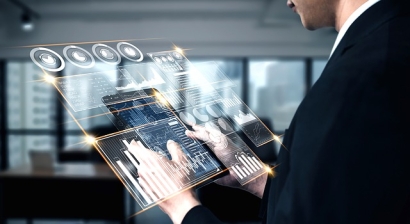
When power plants use fossil fuels to produce energy, they contribute to climate change. Companies can use artificial intelligence (AI) to integrate renewables into their production practices. Renewable energy may effectively minimize global emissions, protecting human health and the environment.
AI can improve renewable energy’s compatibility with the power grid. Adopting clean energy is essential to meeting global sustainability goals. Developed countries like the U.S. established decarbonization objectives from the power sector.
Nearly 81% of America’s energy supply comes from fossil fuels. Adopting emission-free power sources is essential to decarbonizing the national grid. The U.S. plans to eliminate energy-related emissions by 2035.
AI will help countries transition away from fossil fuels and adopt renewable energy. There are five ways the technology improves clean energy’s compatibility with the grid. Different AI systems provide unique benefits to power producers.
One form of AI supporting a sustainable power sector is a smart energy monitor. Smart monitors connect to buildings’ energy meters, collecting consumer data. They determine how much power a building consumes and where energy waste occurs.
Smart energy meters connect to building owners’ smartphones, autonomously alerting them of damage and deficiencies. They may also distribute the information to energy companies, helping prevent future degradation. Consumers can receive optimal energy flows when using AI meter support.
AI technologies also support clean power grids by minimizing energy waste. Some renewable energy sources like solar have low-efficiency rates. Making the most of clean power supplies can help a low-impact energy sector.
Smart heating, ventilation and air conditioning (HVAC) systems use AI to optimize electricity sources. Autonomous HVAC systems inform residents of clogged air filters, helping them address efficiency limitations quickly. Filter obstructions can cause significant energy waste, reducing sustainability.
Using AI technologies may help consumers lower their power consumption rates. Clean grids can support customers with renewable energy when they reduce unnecessary waste. Lower energy waste can also improve cost savings.
Since Russia invaded Ukraine, global oil and gas prices skyrocketed. Individuals struggle to heat their homes and fuel their vehicles as prices continue rising. AI technology may help consumers lower their energy demands, minimizing economic challenges.
Manufacturers are using AI to develop more energy-efficient vehicles. Passenger car emissions decreased by almost a quarter since 2008. High-efficiency and hybrid vehicles require less gas, helping drivers save money.
Other AI systems, like smart lights, also improve consumers’ financial savings. Engineers are additionally conducting technological advancements to enhance renewable energy production rates.
Decarbonizing the power grid requires significant structural changes. Power professionals must build more solar and wind farms to meet consumers’ energy needs. Solar companies are using AI drones to support solar panel installation and inspection practices.
As more individuals install photovoltaic (PV) panels on their roofs, companies must conduct frequent inspections to ensure their efficiency. Individuals can reduce transportation emissions and physical requirements by collecting inspection data remotely using drones. The AI technology also improves renewable energy workers’ safety.
Wind power companies are also relying on drones to minimize fall risks on job sites. Turbines are nearly 295 feet tall, increasing workers’ risks of fatal injuries. When maintenance professionals use drones to conduct inspections and repairs, they increase their safety measures.
Individuals can build more wind farms safely and efficiently using AI technologies. Building enough renewable energy facilities to support consumers’ needs is essential to decarbonizing the grid.
Government officials are supporting the green transition towards renewables. They offer tax credits to residents and business owners adopting solar and wind systems. Government officials may consider offering similar incentives to support AI integration.
The technology can provide countries with economic and environmental benefits over time. Eventually, regions will have to decarbonize their energy sectors, abiding by global sustainability regulations. Integrating AI technologies into the power grid can improve the transition’s efficiency.
Author bio:
Jane works as an environmental and energy writer. She is also the founder and editor-in-chief of Environment.co.

